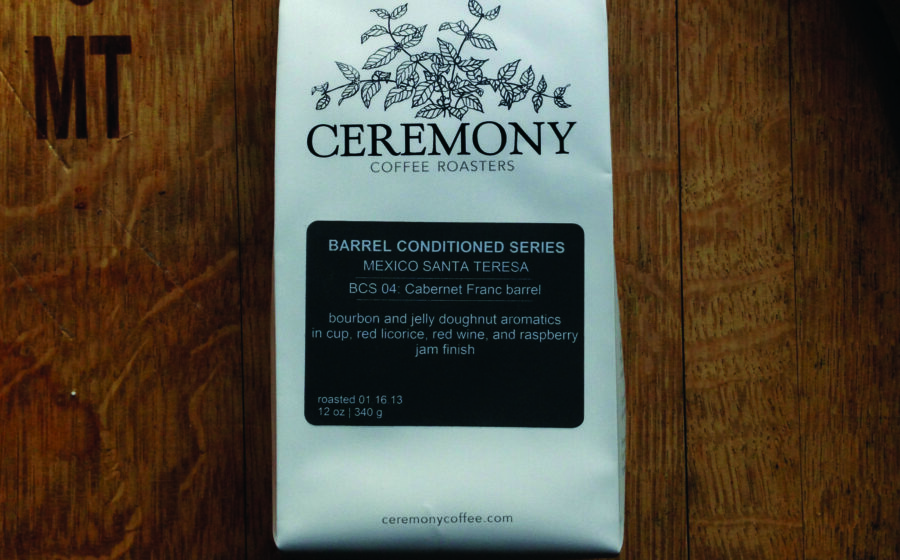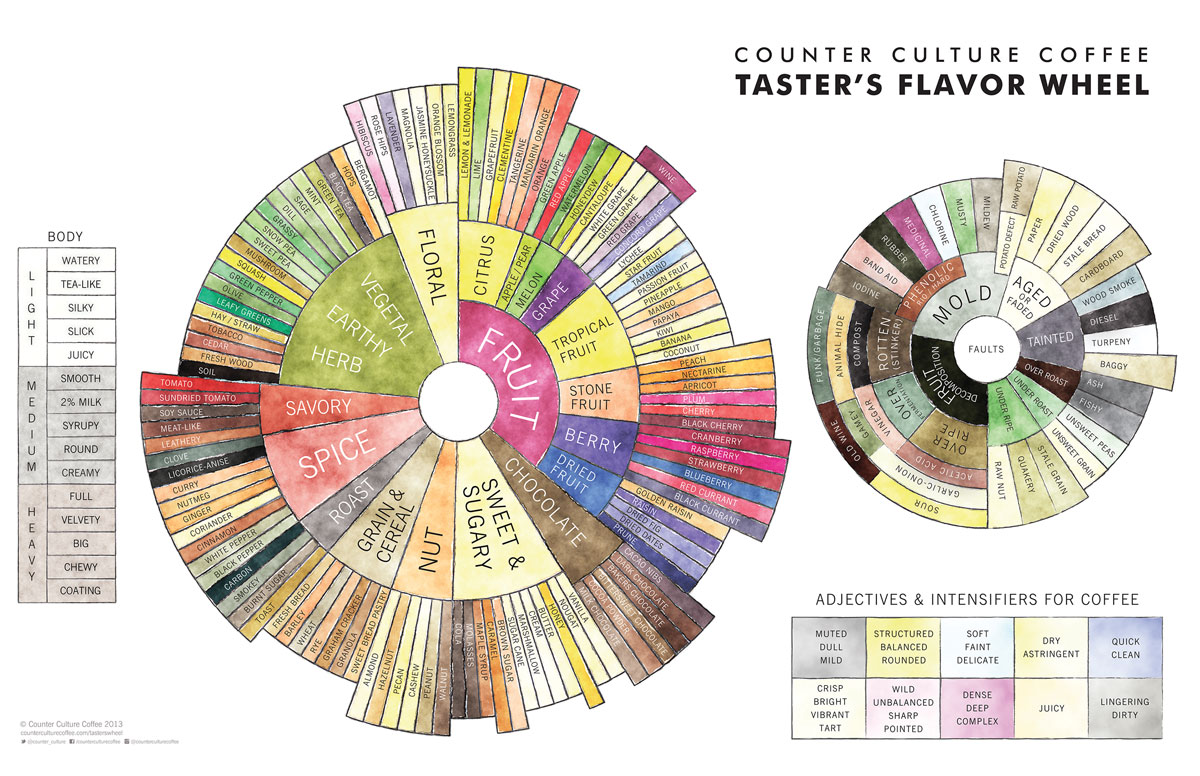[W]hether in the cupping room or in the living room, flavor descriptors for coffees can be as bewildering as they are helpful. With coffee drinkers arrayed along the spectrum of taste ability—some struggling to detect that “vegetal element” and others easily differentiating between tea rose and coffee blossom notes—roasteries take many different paths to offering flavor descriptors for their coffees.
Ceremony Coffee Roasters in Annapolis approaches flavor descriptions with creativity that results in humdingers like “snickerdoodle cookie,” “campfire aromatics,” and “Snickers Bar.” Ronnie Haas, Ceremony’s director of wholesale, says, “For every coffee we release, we collaboratively taste and re-taste it several times and at different stages of cooling to close in on a somewhat complete representation of that coffee (without lapsing into word salad). Everyone smells and tastes slightly different worlds, so multiple inputs from the crew here help us get closer to what are hopefully accurate or overt descriptors for each coffee.”
He acknowledges that a complex descriptor like “Chartreuse” (an herbaceous French liqueur) can be confusing, but also points out that with a little research, the drinker can discover that the liqueur represents herbal, bitter, and sweet notes. “Descriptors like ‘snickerdoodle’ certainly represent spice/butter/sugar browning, and sometimes it does take a practiced palate to label those characteristics as precisely ‘snickerdoodle,’” says Ronnie.
In a cupping room, with the intention of isolating defects, tasting coffees objectively, and determining roast profiles, such romantic descriptors are almost useless. In other settings, though, they can be fun and helpful for coffee drinkers to get more out of their standard cup of coffee. Ronnie says, “I hope our descriptors can offer an experience map of sorts and an exciting, new way to perceive a delicious coffee at the same time.”
Buying a bag of whole bean coffee is always an event, especially for newish coffee drinkers. If, instead of choosing between “chocolate, apricot, and clove” and “white grape, kiwi, and cantaloupe,” the eager coffee lover can hearken to flavor descriptors like “s’mores” and “clove gum” or “Napa chardonnay” and “fruit punch,” the experience can be more comprehensive, touching on personal experiences and rituals.
Often, says Ronnie, “we’re pleasantly surprised to hear people articulating the same descriptors in blind, public cuppings” as were determined in the tasting process. The descriptors also serve as a helpful guide to new coffee drinkers and experienced ones, who might find abstract(ish) flavor concepts like “snickerdoodle” easier to approximate than the breakdown of spice/butter/sugar browning—since not everyone is obsessed with flavor compounds and elements.
As for the cupping room, while describing a coffee as cookie-like won’t help with the kind of objective tasting needed, it can add fun and, ultimately, increased viability to the coffee as the flavors are transferred to marketing materials where, with purchase, a shared experience becomes reality.
Flavor descriptors handily serve as both guides to and confirmation of the tasting experience, regardless of how they’re done. Roasters who experiment with flavor descriptors can have fun, connect with their customers, and sell more coffee.
—Emily McIntyre is a writer based in Portland.

















